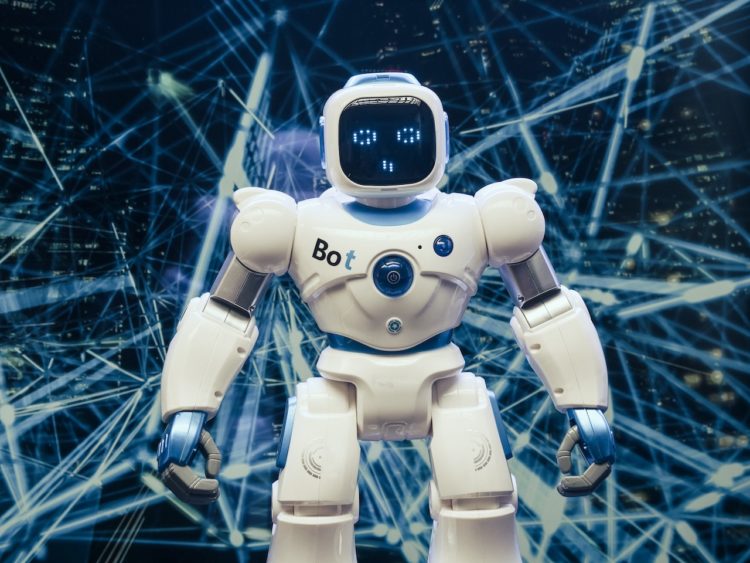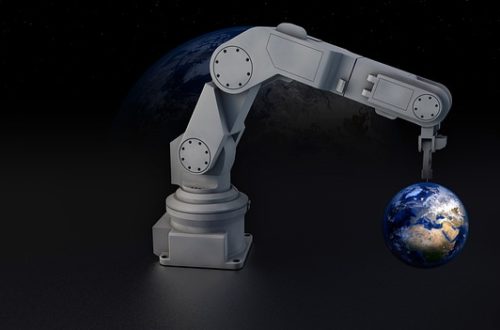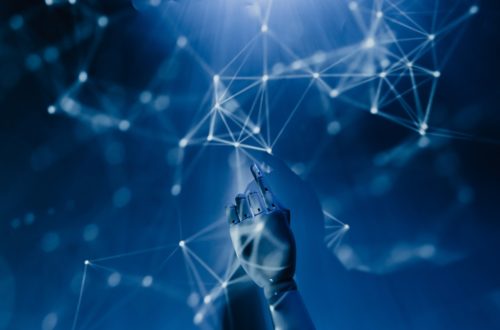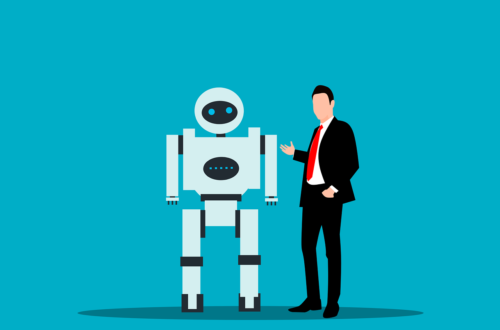Exploring the Latest Advances in Robotics

The field of robotics has undergone significant advances in recent years, with new technologies and innovations making it possible to create robots that are more advanced, versatile, and capable than ever before. From industrial robots that can perform complex tasks with incredible precision to social robots that can interact with humans in natural and intuitive ways, robotics is transforming the way we live and work. In this blog, we will explore some of the latest advances in robotics and the impact they are having on society.
Collaborative Robots
Collaborative robots, also known as cobots, are robots that are designed to work alongside humans in a collaborative environment. These robots are equipped with sensors and other advanced technologies that allow them to detect and respond to human presence and movements, making them safe and easy to work with. Collaborative robots are increasingly being used in manufacturing, healthcare, and other industries where they can assist humans in performing repetitive or dangerous tasks, freeing them up to focus on more complex and creative work.
Autonomous Robots
Autonomous robots are robots that can operate independently without human intervention. These robots are equipped with advanced sensors, artificial intelligence, and other technologies that allow them to navigate and interact with their environment in intelligent and sophisticated ways. Autonomous robots are increasingly being used in transportation, logistics, and other industries where they can improve efficiency, reduce costs, and enhance safety.
Soft Robots
Soft robots are robots that are made from soft and flexible materials, such as rubber or silicone. These robots are designed to be safe, adaptable, and easy to control, making them ideal for use in environments where traditional rigid robots would be unsuitable. Soft robots are being developed for a wide range of applications, including healthcare, entertainment, and exploration, and they are opening up new possibilities for robotics in areas where robots have traditionally been unable to operate.
Swarm Robotics
Swarm robotics is a field of robotics that focuses on the coordination and control of large numbers of small robots, working together to perform complex tasks. Swarm robots are designed to be simple, cheap, and easy to control, and they are being developed for a wide range of applications, including search and rescue, environmental monitoring, and agriculture. By working together, swarm robots can achieve tasks that would be impossible for a single robot to accomplish.
Social Robots
Social robots are robots that are designed to interact with humans in natural and intuitive ways. These robots are equipped with advanced sensors and artificial intelligence that allow them to recognize and respond to human emotions and behaviors, making them ideal for use in healthcare, education, and other fields where human interaction is important. Social robots are being developed to assist with a wide range of tasks, including therapy for children with autism, language learning, and elder care.
Robotics and Artificial Intelligence
Artificial intelligence (AI) and robotics are closely related fields, and advances in one often lead to advances in the other. Robotics has been a key application area for AI, with machine learning and other AI techniques being used to improve the performance of robots in a wide range of applications. AI has also enabled the development of robots that are capable of performing complex tasks, such as object recognition, natural language processing, and decision-making.
In recent years, there has been a growing interest in the combination of robotics and AI, with researchers exploring the use of AI to control and coordinate large numbers of robots, as well as the use of robots to gather data and perform tasks that are difficult or dangerous for humans.
Some of the key applications of robotics and AI include:
- Autonomous vehicles: Autonomous vehicles, such as self-driving cars, are an example of how robotics and AI can work together to create powerful new technologies. These vehicles use sensors, cameras, and other technologies to perceive their environment and make decisions about how to navigate it, and they are being developed for a wide range of applications, including transportation, logistics, and agriculture.
- Robotics in healthcare: Robotics and AI are being used in healthcare to improve patient outcomes and reduce costs. Robots are being developed to assist with surgery, rehabilitation, and other medical procedures, and AI is being used to analyze patient data and predict health outcomes.
- Robotics in manufacturing: Robotics has long been used in manufacturing to perform tasks such as assembly, welding, and painting. AI is now being used to improve the performance of these robots, allowing them to work more efficiently and accurately.
- Robotics in space exploration: Robotics and AI are playing an increasingly important role in space exploration, with robots being used to explore and study distant planets and asteroids. These robots are equipped with advanced sensors and other technologies that allow them to operate in the harsh and remote environments of space.
- Robotics in agriculture: Robotics and AI are being used to improve agriculture by automating tasks such as planting, harvesting, and irrigation. Robots are being developed that can navigate uneven terrain and work in challenging environments, allowing farmers to increase efficiency and reduce costs.
Ethical Considerations
As robotics and AI continue to advance, it is important to consider the ethical implications of these technologies. Robotics and AI have the potential to bring tremendous benefits to society, but they also raise a number of ethical concerns, including:
- Job displacement: As robots become more capable and versatile, there is a risk that they will replace human workers in a wide range of industries. This could lead to job loss and economic disruption, particularly for workers in low-skilled or repetitive jobs.
- Bias and discrimination: AI algorithms can be biased, reflecting the biases of the data used to train them. This can lead to discrimination against certain groups of people, particularly those who are underrepresented in the data.
- Privacy and security: As robots and AI systems gather and process more data about individuals, there is a risk that this data could be misused or stolen. This could lead to breaches of privacy and other security risks.
- Autonomy and control: As robots become more autonomous and capable of making decisions on their own, there is a risk that they could act in ways that are harmful to humans. It is important to ensure that humans retain control over these systems and that they are designed to act in ways that are safe and ethical.
Advantages and disadvantages of robots
Robots have become increasingly prevalent in today’s society, with their use spanning across numerous industries and applications. There are a number of advantages and disadvantages associated with robots, which are discussed below:
Advantages of Robots
- Increased productivity: Robots can perform tasks faster and more accurately than humans, resulting in increased productivity and efficiency in industries such as manufacturing, logistics, and healthcare.
- Improved safety: Robots can be used in hazardous environments where human safety is at risk, such as in chemical plants or nuclear power plants.
- Cost savings: Over time, the use of robots can result in cost savings for companies as they eliminate the need for human labor, which can be expensive.
- 24/7 availability: Robots can work continuously without the need for breaks, resulting in greater output and productivity.
- Consistency: Robots are able to perform tasks with the same level of consistency and accuracy every time, eliminating human errors.
Disadvantages of Robots
- Initial cost: The cost of purchasing and implementing robots can be significant, which may be a barrier for small businesses or startups.
- Lack of flexibility: Robots are designed to perform specific tasks and may not be able to adapt to new or unexpected situations, limiting their versatility in some applications.
- Job displacement: The increased use of robots can result in job displacement for humans, particularly in industries such as manufacturing where robots are increasingly used to perform tasks previously performed by humans.
- Maintenance and repair: Robots require regular maintenance and repair, which can be expensive and time-consuming.
- Ethical concerns: There are ethical concerns associated with the use of robots in certain applications, such as the use of robots in military or law enforcement.
Overall, while there are some drawbacks to the use of robots, the benefits they offer in terms of increased productivity, improved safety, and cost savings are significant. As technology continues to advance, it is likely that robots will become even more prevalent in our society, with their applications expanding into new areas and industries.
Role of Artificial Intelligence (AI) in Robotics
Artificial intelligence (AI) is playing an increasingly important role in the development of robotics. AI techniques such as machine learning, deep learning, and computer vision are being used to improve the performance and capabilities of robots in a wide range of applications.
One of the key applications of AI in robotics is in perception and recognition. Robots need to be able to perceive their environment in order to operate effectively, and AI techniques are being used to develop sensors and algorithms that can help robots recognize and interpret objects, people, and other elements in their surroundings.
Machine learning is particularly important in this context, as it allows robots to learn from their experiences and improve their performance over time. For example, machine learning algorithms can be used to train robots to recognize different objects and respond appropriately to different situations.
AI is also being used to improve the decision-making capabilities of robots. For example, robots can use AI algorithms to process data from their sensors and make decisions about how to move, what actions to take, and how to respond to different stimuli. This is particularly important in applications such as autonomous vehicles and drones, where robots need to make decisions quickly and accurately in real-time.
Another important application of AI in robotics is in human-robot interaction. AI algorithms are being used to develop robots that can communicate with humans in natural language, recognize emotions, and respond appropriately to social cues. This is particularly important in applications such as healthcare and education, where robots are being developed to assist with tasks such as rehabilitation and teaching.
Finally, AI is being used to enable robots to work together in teams. This is important in applications such as manufacturing and logistics, where robots need to coordinate their actions and work together to achieve a common goal. AI algorithms are being used to develop algorithms that can help robots work together in a way that is efficient and effective.
In conclusion, the role of AI in robotics is critical to the development of advanced robots that can operate in a wide range of applications. AI techniques are being used to improve the perception, decision-making, and communication capabilities of robots, as well as to enable robots to work together in teams. As AI continues to advance, we can expect to see even more exciting developments in the field of robotics.
How robots are going to shape the future?
Robots have the potential to shape the future in a number of ways. As technology continues to advance, robots are becoming increasingly sophisticated and capable, with the potential to transform numerous industries and applications. Here are some ways in which robots are likely to shape the future:
- Transforming Manufacturing: The use of robots in manufacturing is already well-established, but as technology continues to advance, we can expect to see even more advanced robots capable of performing a wider range of tasks. With the ability to work faster, more accurately, and without fatigue, robots will continue to revolutionize the manufacturing industry, leading to increased efficiency and productivity.
- Revolutionizing Healthcare: Robots are already being used in healthcare for tasks such as surgery, diagnostics, and rehabilitation, and as technology advances, we can expect to see even more sophisticated robots capable of performing a wider range of tasks. For example, robots may be used to perform remote surgeries or to assist with elderly care, allowing patients to receive high-quality care from the comfort of their own homes.
- Improving Transportation: The use of robots in transportation, particularly in the form of autonomous vehicles, is already well-established, but as technology continues to advance, we can expect to see even more sophisticated and capable vehicles. Autonomous vehicles have the potential to revolutionize transportation, reducing the number of accidents, increasing efficiency, and reducing congestion.
- Enhancing Education: Robots have the potential to transform education, particularly in the area of online learning. For example, robots may be used to create interactive learning environments or to assist with grading and feedback. Additionally, robots may be used to teach social skills or to assist with students with disabilities.
- Changing the Nature of Work: The increasing use of robots in the workplace is likely to have a significant impact on the nature of work itself. With the ability to perform tasks faster and more accurately than humans, robots will continue to displace human workers in a number of industries. This will lead to a shift in the types of jobs available, with more emphasis placed on tasks that require human creativity and problem-solving skills.
In conclusion, the use of robots is likely to have a profound impact on the future, transforming numerous industries and applications. As technology continues to advance, we can expect to see even more sophisticated and capable robots capable of performing a wider range of tasks. While there are certainly challenges associated with the increasing use of robots, the potential benefits in terms of increased efficiency, productivity, and safety are significant.
Would you like to receive similar articles by email?





